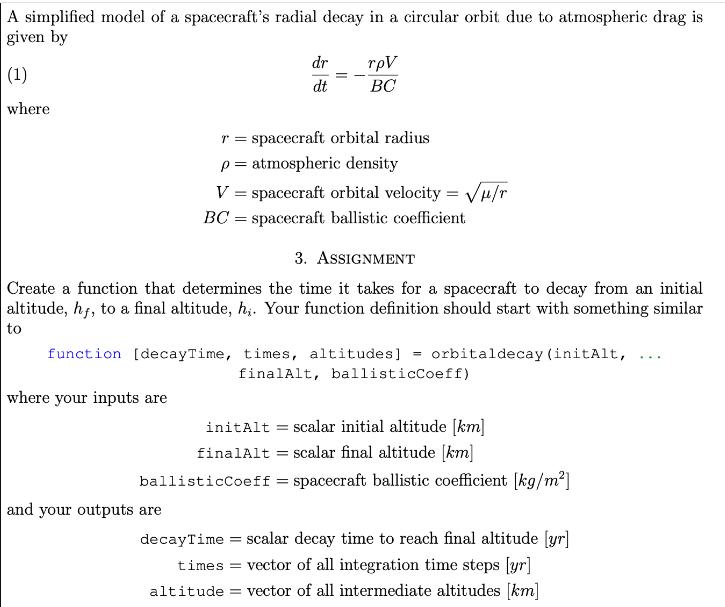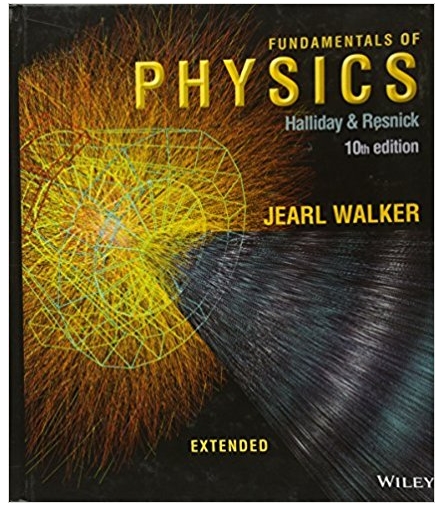Answered step by step
Verified Expert Solution
Question
1 Approved Answer
A simplified model of a spacecraft's radial decay in a circular orbit due to atmospheric drag is given by (1) where dr dt rpV



A simplified model of a spacecraft's radial decay in a circular orbit due to atmospheric drag is given by (1) where dr dt rpV BC T = spacecraft orbital radius p = atmospheric density V = spacecraft orbital velocity = /r BC = spacecraft ballistic coefficient. 3. ASSIGNMENT Create a function that determines the time it takes for a spacecraft to decay from an initial altitude, hf, to a final altitude, h,. Your function definition should start with something similar to and your outputs are function [decayTime, times, altitudes] = orbitaldecay (initAlt, finalAlt, ballisticCoeff) where your inputs are initAlt = scalar initial altitude [km] finalAlt scalar final altitude [km] ballisticCoeff = spacecraft ballistic coefficient [kg/m] decayTime = scalar decay time to reach final altitude [yr] times = vector of all integration time steps [yr] altitude = vector of all intermediate altitudes [km] Note: These variable names are just suggestions, you may change them as you wish as long as you maintain code readability. You will need to use ode 45 and the included function atmosphericDensity.m to solve for p. Use Ro = 6378 km for the Earth's radius, and = 3.985 x 105 km/s for Earth's gravitational parameter. 3.1. Deliverable. Once your function is written, use it to solve for the following cases: (1) hi = 750 km, hf - (2) hi 750 km, hf = 100 km, BC = 25 kg/m 100 km, BC = 50 kg/m 100 km, BC = 25 kg/m (3) hi 1000 km, hf (4) hi = 1000 km, hf 100 km, BC = 50 kg/m - - = = = Then, Create a figure with 2 subplots: Case 1/2 on the left, Case 3/4 on the right. Make sure your plots are properly labeled. Output the final decay time for each case.
Step by Step Solution
There are 3 Steps involved in it
Step: 1

Get Instant Access to Expert-Tailored Solutions
See step-by-step solutions with expert insights and AI powered tools for academic success
Step: 2

Step: 3

Ace Your Homework with AI
Get the answers you need in no time with our AI-driven, step-by-step assistance
Get Started


